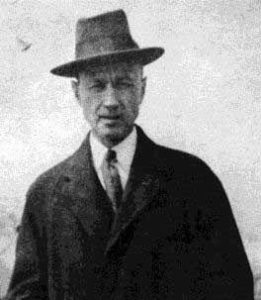On January 24, 26 and 27, Music Director Andrés Orozco-Estrada and the Houston Symphony continue their exploration of Charles Ives’ Fourth Symphony. In this post, discover the traditional protestant hymns that inspired the serene third movement of this watershed symphony. Get tickets and more information here.

Ives’ Fourth Symphony is his crowning achievement, the summation of all he had accomplished as a composer. Begun around 1910, Ives labored over it for many years, refining and altering the score well into the 1920s. The third movement, however, derives from much earlier in his life; it was reworked from a fugue he had written while a college student at Yale.
This fugue is thus the most conventional of all the symphony’s movements. Indeed, the familiarness of its musical language is shocking compared with the dissonance and complexity of the preceding movement. This eclecticism is a hallmark of Ives’ mature style, and often serves a symbolic purpose. A program note from an early, partial performance of the symphony (certainly informed by and quite possibly ghost-written by Ives) explains that the first movement poses “the searching questions of What? and Why? which the spirit of man asks of life,” and that “The three succeeding movements are the diverse answers in which existence replies.”
The second movement parodied false spirituality with a tone poem about a luxury express train that purportedly takes paying passengers to heaven, but in fact goes straight to hell. The third movement is “an expression of the reaction of life into formalism and ritualism”—generally interpreted as a depiction of organized religion (namely the Protestant Christianity Ives was raised with). It takes the form of a fugue, a learned type of composition from the baroque era that weaves together independent melody lines into a harmonious whole. The fugue begins with a main idea based on a traditional missionary hymn, “From Greenland’s Icy Mountains,” which implores Christians to convert non-believers the world over. The appearance of the organ in this movement further associates it with the atmosphere of a New England church:
Ives’ view of this form of spirituality appears to be sincere and sympathetic. The music has a meditative inwardness that builds to an expressive climax featuring lush, divisi strings. If a hint of chromaticism disturbs the mood, it is soon resolved in a quiet and peaceful coda, in which the trombone quotes a fragment of the hymn “Joy to the World,” specifically the refrain: “Let heaven and nature sing.”
Serene though this movement is, it is only a step towards Ives’ answer to his “searching questions.” The ultimate revelation comes in the final movement, which the Houston Symphony will perform at Rachmaninoff’s The Bells on May 9, 11 and 12.
Don’t miss the third movement of Ives’ Symphony No. 4 on January 24, 26 and 27! Get tickets and more information here.



